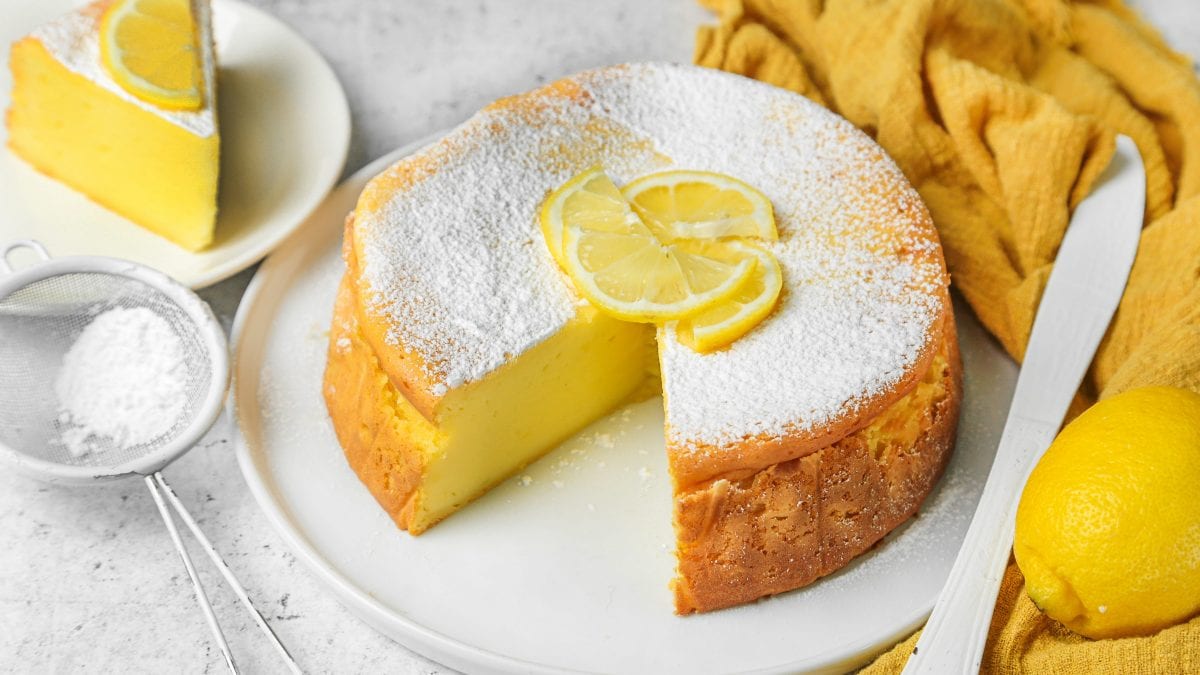
Lemon Moelleux, or Moelleux au Citron, is a traditional French cake. Creamy and fragrant, it's made without flour, butter, oil, or yeast: ideal for those with gluten intolerance and celiac disease, it's a delight for both adults and children with its irresistible goodness and melt-in-the-mouth texture.
Quick and easy, it's made with mascarpone, plain yogurt, lemons—both the juice and grated zest are used—and cornstarch instead of flour. Baking in the oven will create a fresh dessert with a pleasantly moist and soft texture (moelleux, in French, means "soft"), ideal for a snack or as a dessert, perhaps accompanied by a scoop of ice cream or a dollop of custard.
What is Moelleux au Citron?
The origins of the moelleux, which in French means “soft” or “tender,” can be traced to the evolution of European sponge and pound cakes in the 18th and 19th centuries. Bakers discovered that adding citrus—like lemon juice and zest—along with leavening agents not only brightened flavors but also helped create an airy, moist crumb. Over time, French pâtissiers refined this approach, balancing gentle sweetness, subtle tang, and fluffy texture to craft what we now know as moelleux au citron, a delicate lemon cake prized for its melt-in-the-mouth consistency. As it gained popularity across France, regional bakers put their own stamp on it—some incorporating almond flour, yogurt, ricotta, olive oil, or even finishing it with a dusting of powdered sugar or fresh berries for elegance.
Meanwhile, the broader tradition of lemon-flavored desserts was flourishing: from Italian Renaissance lemon cakes to the 18th–19th century French tarte au citron, a refined lemon curd tart perfected by pastry chefs of the time. The arrival of lemon cakes in the United States followed European culinary traditions carried by immigrants and cookbook circles in the 19th century; lemon cakes became staples in American home baking, with handwritten recipes appearing in mid-1800s cookbooks. However, the distinctly French-style moelleux au citron saw broader recognition in the U.S. more recently, especially during the 20th century's post-war era of refined desserts. Iconic American versions like lemon chiffon cake (created in the 1920s) highlighted the appeal of citrus in light, airy confections and helped pave the way for deeper appreciation of European moelleux varieties.
Pro Tips for The Best Lemon Moelleux
- Always opt for fresh, unwaxed lemons. The zest is key to infusing the cake with a natural citrus aroma, while the juice gives that tangy brightness moelleux is known for.
- Gently fold the flour into the wet mixture to avoid overworking the batter. Overmixing can make the cake dense rather than soft and airy.
- Keep a close eye on the oven. Bake until just set—when a skewer comes out with a few moist crumbs. Overbaking will dry it out and ruin the soft center.
- Moelleux often tastes better after resting for a few hours, as the lemon flavor deepens and the texture becomes even more moist and tender.
- Use a non-stick or silicone mold and butter it well. A loaf pan, mini molds, or muffin tins all work depending on the desired presentation.
- The moelleux shines when slightly warm—pair with a dollop of whipped cream or a scoop of vanilla gelato for elegance.
Why Did My Moelleux Collapse?
Your moelleux likely collapsed because it was either underbaked, overmixed, or too much leavening was used. These cakes are delicate and rely on a careful balance of air and structure. If removed from the oven too early, the center may sink as it cools. Overmixing can deflate the batter, and excessive baking powder or soda causes the cake to rise rapidly and then collapse. Always test doneness with a skewer and handle the batter gently for best results.
Are The Eggs in Moelleux Raw?
No, the eggs in moelleux au citron are not raw. They are fully cooked during baking, which sets their proteins and gives the cake its soft, tender texture. While some moelleux au chocolat versions have molten centers that may appear undercooked, lemon moelleux is typically baked through, ensuring the eggs are safely cooked and integrated into the structure of the cake.
Can I Use Another Citrus Fruit?
Yes, you can absolutely substitute lemon with other citrus fruits to create delicious variations. Orange, lime, or even tangerine work beautifully—just adjust the zest and juice quantities to match their sweetness or tartness. For instance, oranges provide a sweeter, milder flavor, while limes add a sharper tang. Blood oranges or grapefruit can offer unique colors and bold aromas, too. Just be sure the citrus you choose is fresh and unwaxed for the best zest and juice.
Can I Add Anything Else to This Moelleux?
Try folding in poppy seeds for texture, a hint of vanilla or almond extract for depth, or a spoonful of ricotta or yogurt for extra moisture. Fresh herbs like thyme or basil pair surprisingly well with citrus, adding a subtle aromatic twist. You could also top it with berries, slivered almonds, or a thin lemon glaze for elegance and flavor contrast—just keep additions balanced so they don’t overpower the soft, airy texture.
How to Serve Moelleux au Citron
Moelleux au citron is best served slightly warm or at room temperature to highlight its soft, moist texture and bright citrus flavor. You can enjoy it plain with a dusting of powdered sugar, or elevate it with a dollop of whipped cream, a scoop of vanilla gelato, or a drizzle of lemon glaze. For a refined presentation, pair it with fresh berries or a sprig of mint. It also pairs beautifully with tea or a light dessert wine, making it perfect for both casual and elegant occasions.
Can I Make It Ahead of Time?
Yes, moelleux au citron can be made ahead of time and actually tastes even better after resting, as the citrus flavor deepens and the texture becomes more tender.
Does It Freeze Well?
Yes, moelleux au citron freezes very well. Once cooled completely, wrap it tightly in plastic wrap and then in aluminum foil or place it in an airtight container to prevent freezer burn. It can be frozen for up to 1 month. To serve, thaw it at room temperature for a few hours—its soft, moist texture holds up beautifully. You can even gently warm it in the oven for a few minutes to revive its fresh-baked feel.
How to Store Any Leftovers
To store leftovers, let the cake cool completely, then place it in an airtight container. It will stay fresh at room temperature for up to 2 days, or in the refrigerator for up to 4 days. If refrigerated, let it sit at room temperature for 20–30 minutes before serving to regain its soft, delicate texture.
Ingredients
How to Make Lemon Moelleux
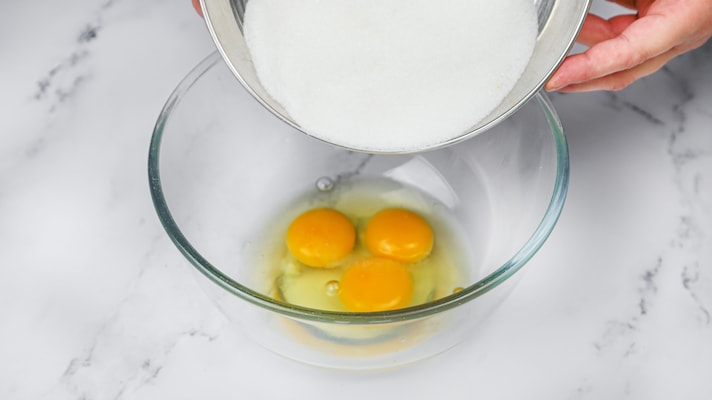
In a bowl, break the eggs and add the sugar.
In a bowl, break the eggs and add the sugar.
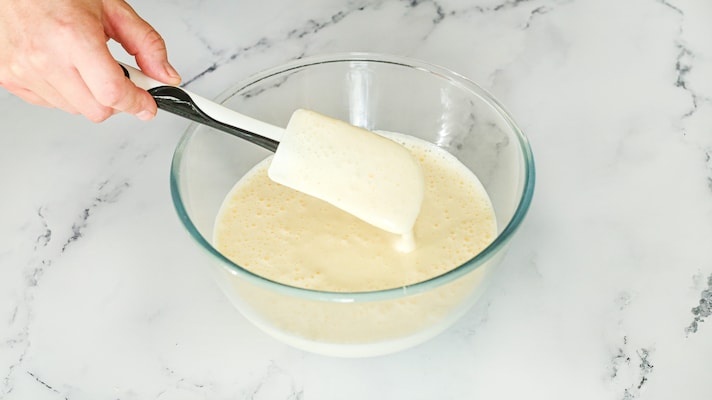
Add a pinch of salt and, with an electric whisk, work until the mixture becomes light and frothy.
Add a pinch of salt and, with an electric whisk, work until the mixture becomes light and frothy.
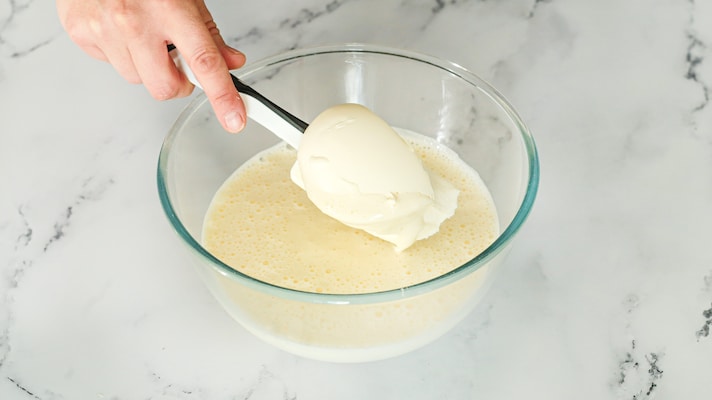
Add the mascarpone and mix.
Add the mascarpone and mix.
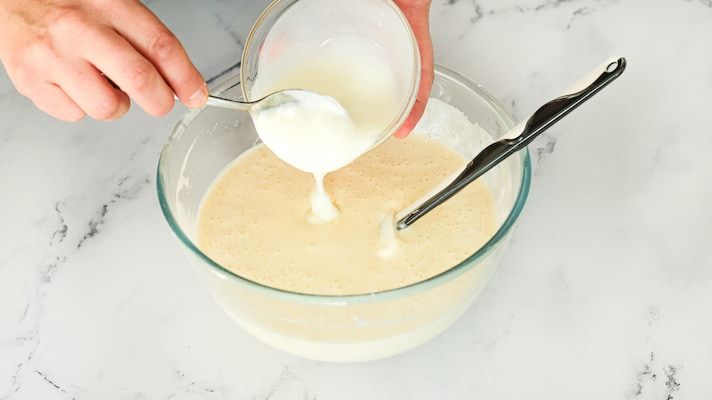
Also add the plain yogurt.
Also add the plain yogurt.
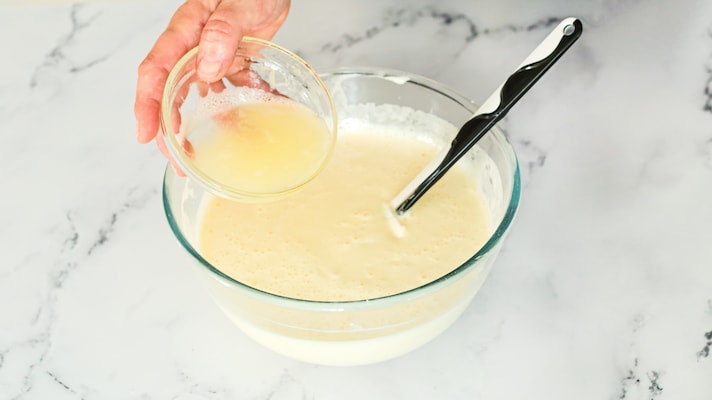
Squeeze the two lemons, filter the juice and add it to the mixture.
Squeeze the two lemons, filter the juice and add it to the mixture.
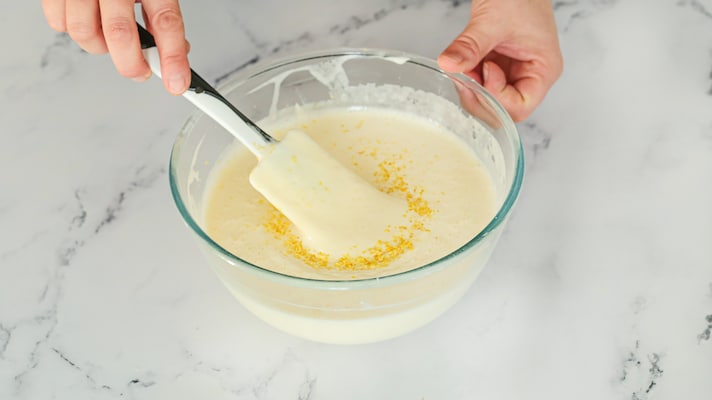
Grate the zest of a lemon and mix it in well.
Grate the zest of a lemon and mix it in well.
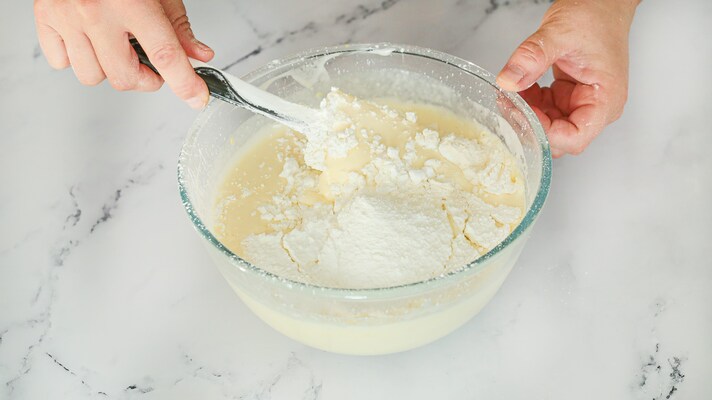
Sift the cornstarch and add it to the mixture in several batches.
Sift the cornstarch and add it to the mixture in several batches.
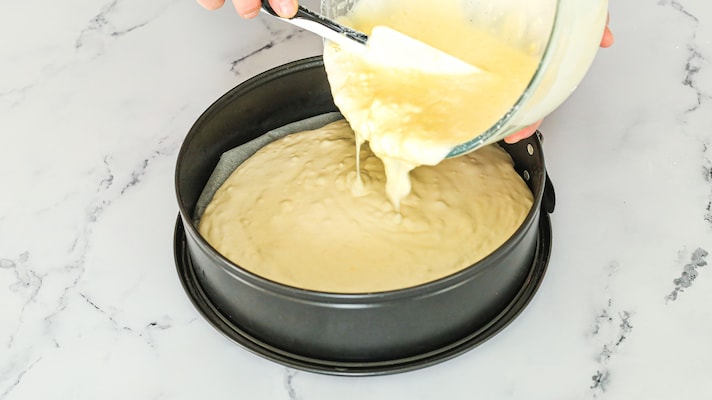
Line a 20cm diameter springform pan with baking paper and pour the mixture inside. Bake at 360°F/180°C for 40 minutes in a conventional oven.
Line a 20cm diameter springform pan with baking paper and pour the mixture inside. Bake at 360°F/180°C for 40 minutes in a conventional oven.
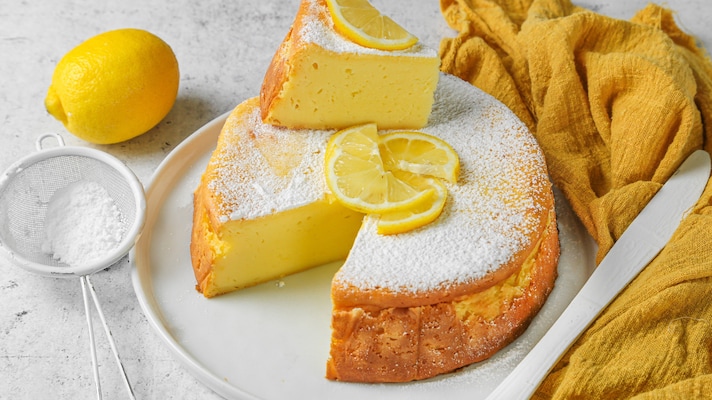
Once the baking time is up, remove the cake from the oven and let it cool completely. Carefully unmold it and sprinkle the surface with a little powdered sugar. Cut into slices and enjoy!
Once the baking time is up, remove the cake from the oven and let it cool completely. Carefully unmold it and sprinkle the surface with a little powdered sugar. Cut into slices and enjoy!
;Resize,width=767;)
